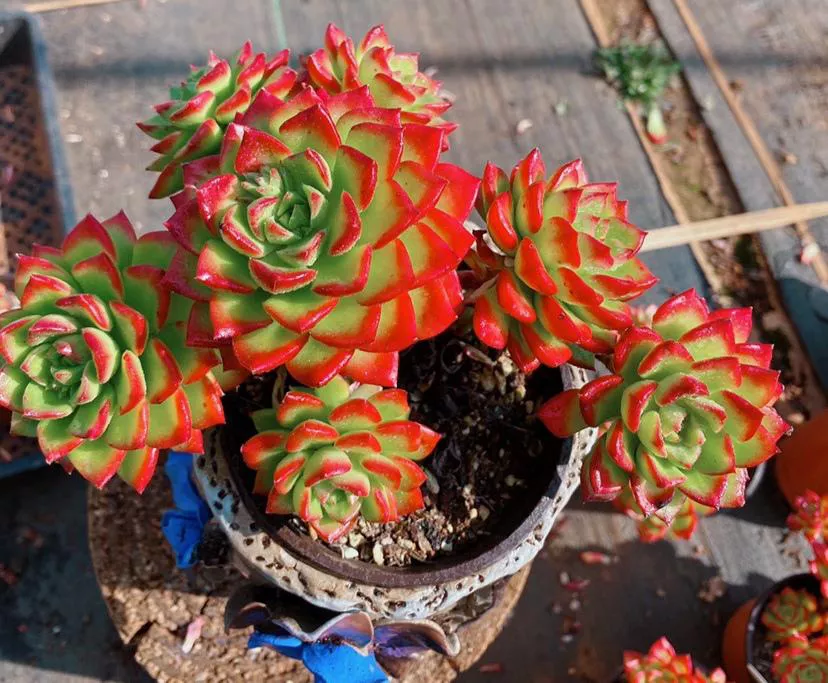Succulents have taken the world of gardening and home decor by storm with their unique, captivating appearance and ease of care. However, for succulents to thrive, it’s essential to understand what these remarkable plants like and need.
Light Preferences for Succulents
Succulents adore abundant sunlight. To maintain healthy succulents, they should be placed in locations where they can bask in bright, indirect sunlight for most of the day. However, the intensity and duration of sunlight may vary depending on the type of succulent you have. Some varieties can tolerate direct sunlight, while others require filtered or dappled light to prevent sunburn.
Succulent Soil Requirements
Succulents prefer well-draining soil that mimics the arid environments where they naturally thrive. A succulent-specific potting mix, often composed of materials like perlite and coarse sand, is ideal for ensuring proper drainage. This helps prevent waterlogged roots, a common problem that can be fatal to succulents.
Watering Succulents
One of the most critical aspects of succulent care is watering. Succulents have adapted to store water in their leaves, stems, or roots, enabling them to withstand dry conditions. They dislike being consistently moist and are susceptible to root rot if overwatered. Allow the soil to dry out completely between waterings, and ensure that the pot has drainage holes to prevent excess water retention.
Temperature Preferences
Succulents thrive in temperatures that mimic their native desert and arid habitats. They generally prefer warm temperatures during the growing season, typically between 60°F and 80°F (15°C to 27°C). In the winter, many succulents appreciate cooler conditions, but frost-sensitive varieties should be protected from freezing temperatures.
Humidity Tolerance
Succulents are known for their ability to endure low humidity levels. They are well-suited to indoor environments, making them excellent houseplants. However, if you live in an area with high humidity, be cautious not to overwater, as excess moisture can lead to fungal issues.
Choosing the Right Pot for Succulents
Selecting the appropriate pot for your succulents is crucial. Terracotta pots are an excellent choice, as they are porous and allow for better air circulation and evaporation. The porous nature of these pots helps to prevent waterlogged soil. Additionally, choosing a pot with drainage holes is vital to ensure proper moisture control.
Fertilizing Succulents
Succulents have relatively low nutrient requirements, and over-fertilizing can lead to problems. Use a balanced, diluted, liquid fertilizer during the growing season, usually from spring to early autumn. Apply the fertilizer sparingly to avoid nutrient excess, which can harm your succulents.
Pruning and Grooming Succulents
Succulents like to be neat and tidy. Regularly remove dead or decaying leaves to improve air circulation and prevent the spread of pests and diseases. Grooming your succulents not only enhances their appearance but also promotes overall health.
Succulent Propagation
Many succulent enthusiasts love propagating these plants, and succulents generally respond well to various propagation methods, including leaf and stem cuttings, offsets, and seeds. Propagation is a fantastic way to grow your succulent collection and share the love of succulents with others.
Pests and Diseases
Succulents are relatively hardy, but they can still fall victim to pests like aphids, mealybugs, and scale insects. Regularly inspect your succulents for signs of infestation and take prompt action if needed. Common succulent diseases, such as fungal infections, are often a result of overwatering or poor airflow.
Seasonal Changes
Succulents respond to seasonal changes, and their care requirements may vary throughout the year. Adjust your watering schedule, light exposure, and even temperature conditions to meet the needs of your succulents as they transition through different seasons.
Succulent Diversity
Succulents come in a wide array of shapes, sizes, and colors, each with its own unique care requirements. Understanding the specific preferences of the succulents in your collection is essential for their well-being. Be sure to research the needs of individual species and varieties you own.
Succulent Containers and Arrangements
Succulents are incredibly versatile and can be used to create stunning container gardens and arrangements. Whether you’re designing a succulent centerpiece or a mini desert landscape in a terrarium, consider the aesthetic and care requirements of the succulents you choose for your project.
Conclusion
In conclusion, understanding what succulents like is key to ensuring their health and vitality. These resilient plants thrive in well-draining soil, prefer abundant sunlight, and have low water and nutrient requirements. Succulents are adaptable and diverse, making them an excellent choice for both indoor and outdoor gardening. With the right care and attention to their specific needs, succulents can grace your living spaces with their distinctive beauty for years to come.


